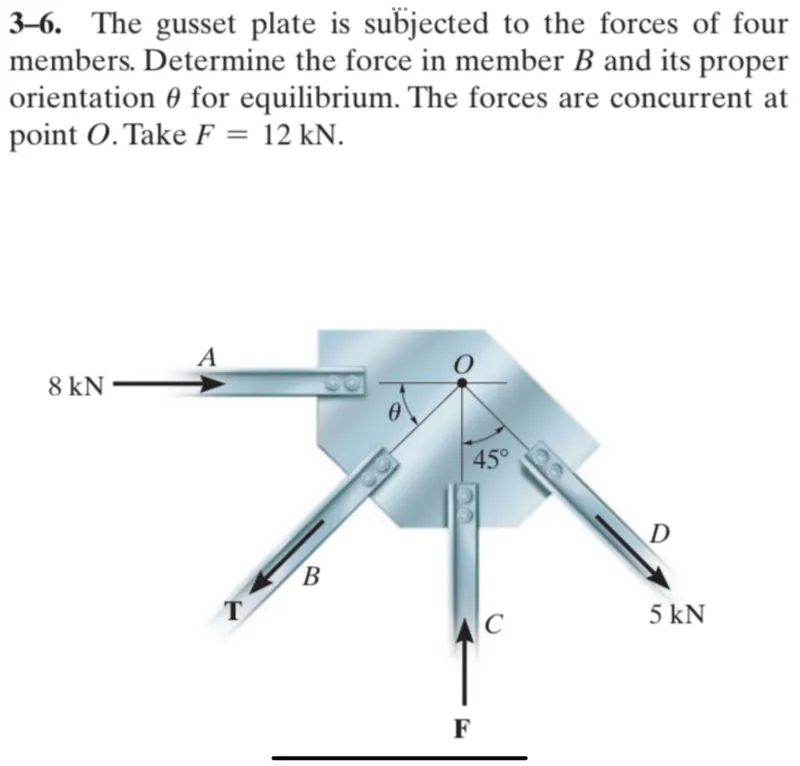Questions: The gusset plate is subjected to the forces of four members. Determine the force in member B and its proper orientation θ for equilibrium. The forces are concurrent at point O. Take F = 12 kN.

Transcript text: The gusset plate is subjected to the forces of four members. Determine the force in member $B$ and its proper orientation $\theta$ for equilibrium. The forces are concurrent at point $O$. Take $F=12 \mathrm{kN}$.





